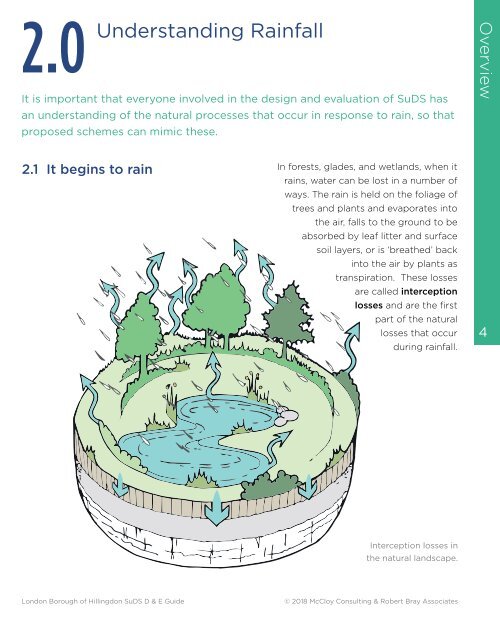Hillingdon SuDS Design & Evaluation Guide
Create successful ePaper yourself
Turn your PDF publications into a flip-book with our unique Google optimized e-Paper software.
2.0<br />
Understanding Rainfall<br />
It is important that everyone involved in the design and evaluation of <strong>SuDS</strong> has<br />
an understanding of the natural processes that occur in response to rain, so that<br />
proposed schemes can mimic these.<br />
Overview<br />
2.1 It begins to rain<br />
In forests, glades, and wetlands, when it<br />
rains, water can be lost in a number of<br />
ways. The rain is held on the foliage of<br />
trees and plants and evaporates into<br />
the air, falls to the ground to be<br />
absorbed by leaf litter and surface<br />
soil layers, or is ‘breathed’ back<br />
into the air by plants as<br />
transpiration. These losses<br />
are called interception<br />
losses and are the first<br />
part of the natural<br />
losses that occur<br />
during rainfall.<br />
4<br />
Interception losses in<br />
the natural landscape.<br />
London Borough of <strong>Hillingdon</strong> <strong>SuDS</strong> D & E <strong>Guide</strong><br />
© 2018 McCloy Consulting & Robert Bray Associates


